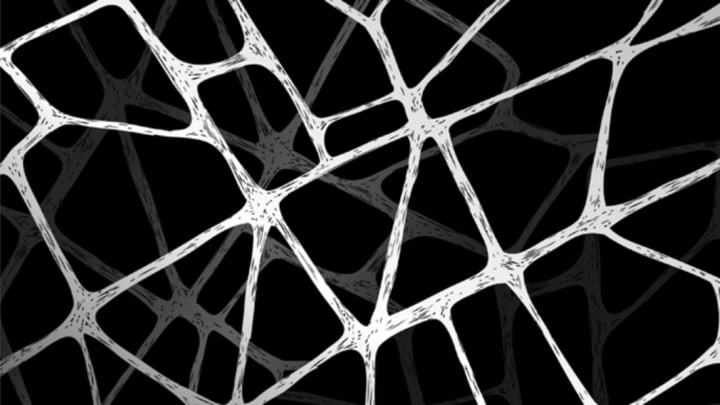Spider silk is nature’s wonder material. It's stronger than steel, but just one-sixth the density. It's more elastic than a rubber band, sometimes stretching up to five times its original length without breaking. “A thread with a diameter of 2 centimeters could pull a whole airplane,” says biochemist Artem Davidenko at RWTH Aachen University in Germany. This material, produced by nature, may be stronger than anything man has ever made, but researchers from the University of Trento in Italy found a way to make it even stronger: lace it with carbon.
For the study, Nicola Pugno, a professor of solid and structural mechanics at the University of Trento, decided to combine spider silk with some of the strongest synthetic materials around: graphene and carbon nanotubes. Both are very light, thin, and incredibly conductive—meaning they could have huge implications for how materials and electronics are made. Pugno and his team sprayed several spiders with one of two solutions: water and graphene, or water and carbon nanotubes.
The results? While some of the test spiders’ silk became weaker, others spun super-strength silk that would make even Spider-man jealous. The strongest stuff came from the arachnids that received a spritzing of water and carbon nanotubes, producing silk 3.5 times stronger and more flexible than the toughest spider silk out there (which, for the record, is already 10 times stronger than Kevlar and comes from this creature found in the depths of Madagascar).
“This is the highest toughness modulus for a fibre, surpassing synthetic polymeric high performance fibres (e.g. Kelvar49) and even the current toughest knotted fibers,” they say. In other words, this mutant spider silk is made of the strongest fibers ever measured.
How the spiders turned the carbon into silk is a bit of a mystery, though Pugno thinks they absorbed the material from the environment, ingesting it and then incorporating it into the silk. Another theory is that the carbon coated the silk after it was spun.
The implications for this super-strength spider silk could be great: picture extremely strong textiles, or a new method of repairing damaged tissues. Pugno even suggests it could be used to make a net that could catch a falling aircraft. That’s some straight-up superhero stuff right there (though hopefully there won’t be a high demand for that kind of product). We’ve been coming up with new ways to use spidey silk for years and we’ve thought of everything from bulletproof clothing to better bandages to softer, more absorbent airbags. It could even be used for stitching wounds, because it maintains its strength even under extreme heat, so it could be easily sterilized.
So why don’t we see all these wonder products yet? The problem is that producing and harvesting spider silk in bulk is really difficult, and we haven’t quite figured out how to do it yet. Spiders are cannibalistic, so the idea of colonies raised to pump out silk for commercial purposes is a bit unrealistic.
However, researchers have seen some promise in genetically engineering silkworms to produce spider silk in large amounts. Could the carbon spray method have the same effect on silkworms? That’s what Pugno wants to explore next. “This concept could become a way to obtain materials with superior characteristics," he says.
